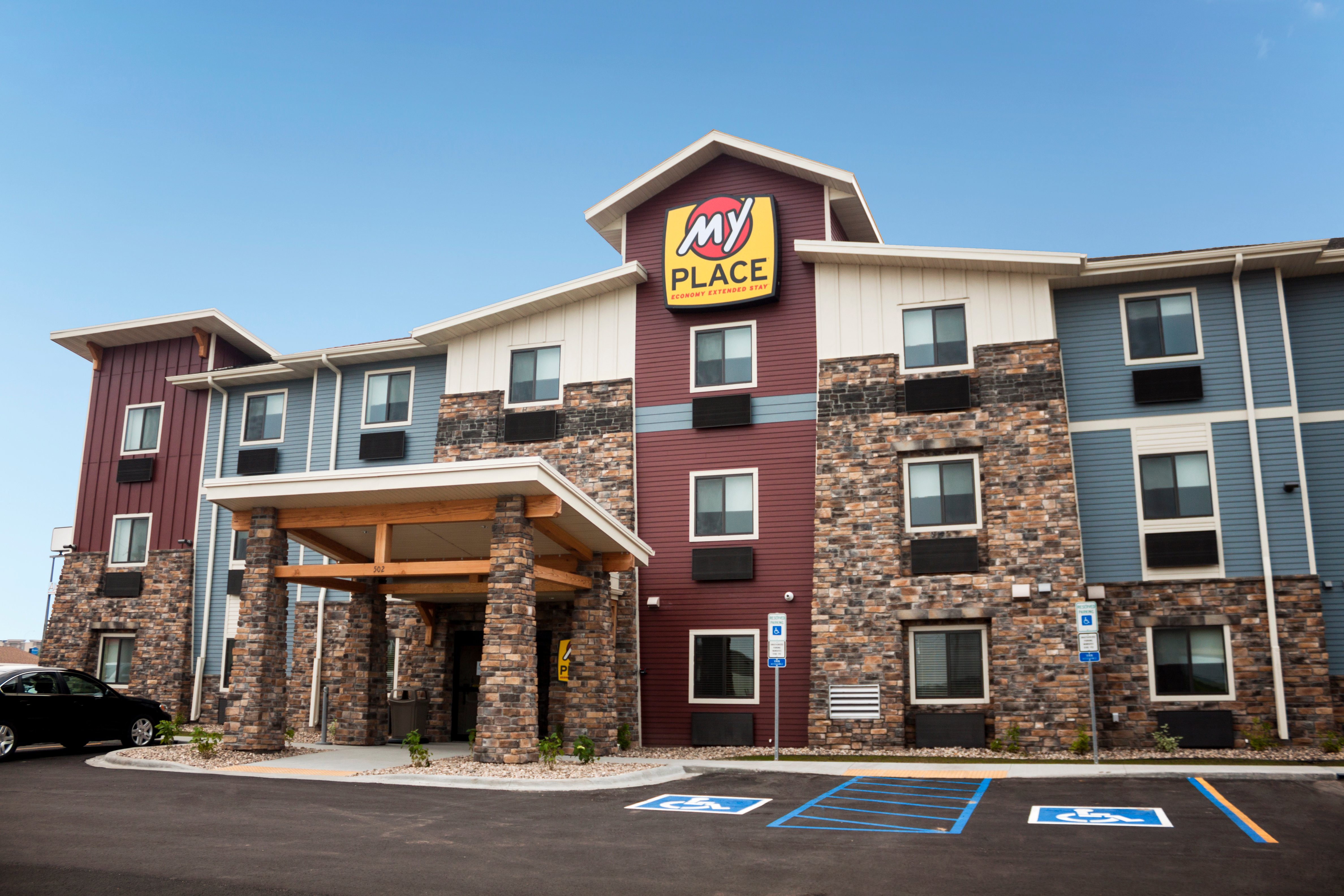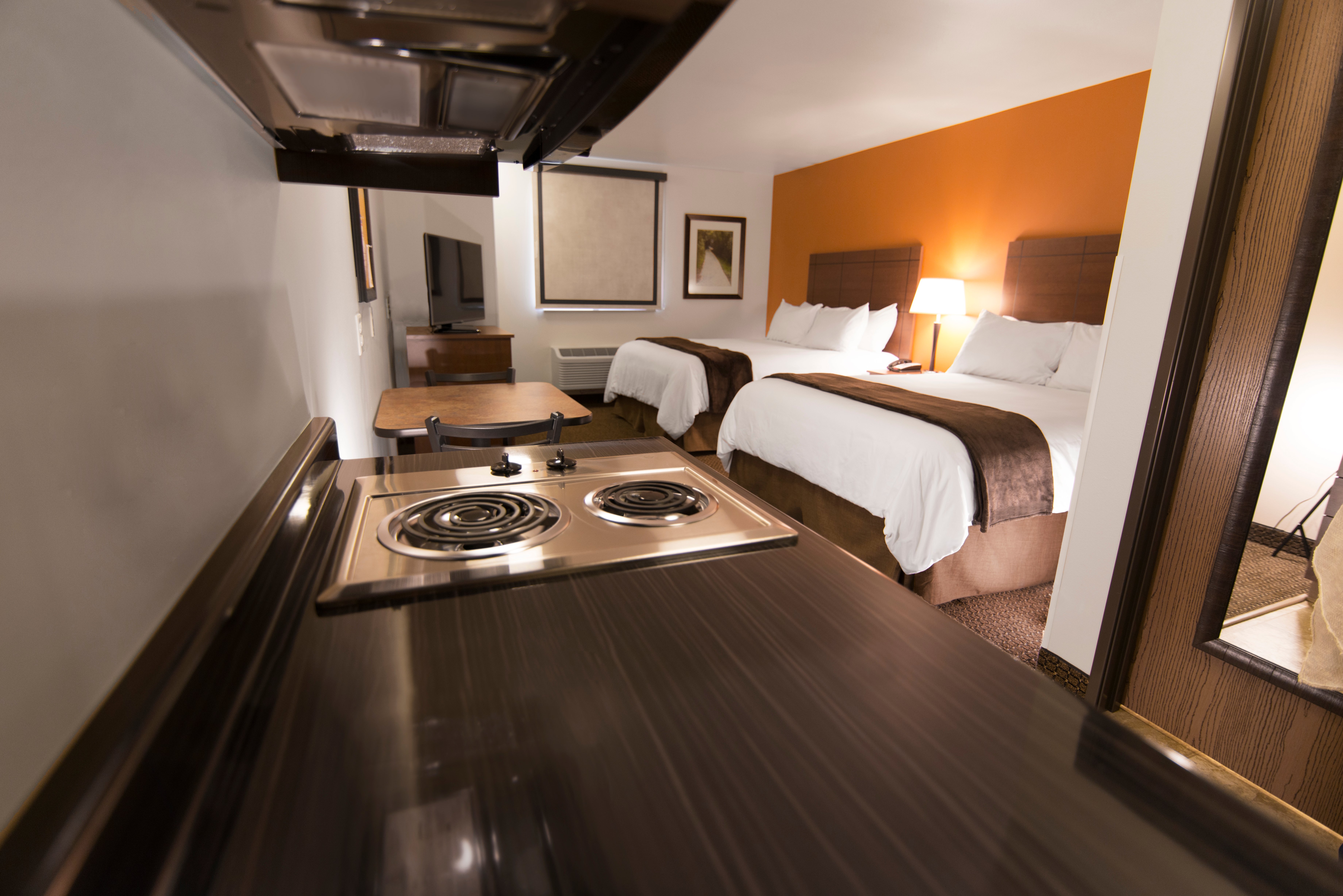My Place Hotels of America, the extended-stay brand that plays in a nascent space somewhere between midscale and economy, might be the newish kid on the block, but there is legendary lineage in its leadership. My Place’s co-founder, chairman and CEO is Ron Rivett, who co-founded Super 8 Motels, in Aberdeen, S.D., in 1974. While Ron Rivett plays the doyen role, his grandson, Ryan, president and COO of My Place, is the spokesperson and voice.
At the brand’s conference earlier this year in Las Vegas, the younger Rivett commented that midscale hotels have shifted upward and downward and, “in between is our niche.”
Rivett said the brand is “not too focused on high rates and curb appeal,” instead, trying to maintain a balance between “aesthetic value and real financial value.”
It’s paying off. The brand, which launched in 2012, has 24 hotels operating now, just opened in Amarillo, Texas, and 10 to 12 more properties are slated to open by the end of the year. Future openings this year and into next include Independence, Mo. (October 2016); Lithia Springs, Ga. (October 2016); Marquette, Mich. (January 2017); Meridian, Idaho (March 2017); and Yakima, Wash. (March 2017).
Rivett compared My Place to a potato chip. “Like a Lay’s,” he said, “you can’t do just one.”

Terry Kline, EVP of franchise development for My Place Hotels, spoke to HOTEL MANAGEMENT on the day of the four-story, 63-room Amarillo opening, and his excitement for the brand is based, in part, on its swift expansion. With the additional openings, My Place’s footprint will be over 17 states, “which we feel pretty good about, considering the three-plus plus years we’ve been at this,” he said.
While the bulk of My Place’s properties are west of the Mississippi (think North and South Dakota), swapping out the word “West” for “East” in the famous Horace Greeley line rather suits My Place. It is, indeed, headed eastward, with projects in some stage of development in Georgia, North and South Carolina and Florida.
“We’re in conversation with a number of developers throughout the Mid-Atlantic states, as well,” Kline said. “There are a number of developers that are looking in those areas and it’s just a matter of identifying the right locations. Not just markets, but the right piece of dirt in each market.”
And plans are not limited to the U.S. Development discussions have also focused on Canada and even Costa Rica.
When prodded, Kline said he has no problem seeing My Place cross the 100-hotel threshold within the next five years.
Then again, many other companies are developing now, too, a product of dormant projects resurrected post-Great Recession. “This particular cycle is protracted and is running longer than the typical ones,” Kline said, alluding to the trough of 2007/2008. “We’re still catching up.”
The extended-stay market as a whole had a good start to 2016, according to the Highland Group’s "First Quarter U.S. Extended Stay Lodging" report. Demand continued to increase at about 5 percent quarterly—though an increase in supply is reducing occupancy (room supply is growing at about 6 percent annually). Still, gains in average daily rate have made up for the loss in occupancy, the report said. Revenue per available room in the extended-stay space, the report stated, continues to outpace the industry as a whole.
Developer Friendly
My Place, similar to other midscale and economy product, has an attractive value proposition that developers covet: low cost, high return. According to Kline, all in and inclusive of land, a My Place property will cost a developer in the neighborhood of $5.5 million or around $65,000 per key. With 70- to 80-percent leverage on that, a My Place becomes a rather compelling, easier investment. Architecture and development are also turnkey, with a prototypical design package that allows developers to not have to engage with an architect to “reinvent the wheel,” Kline said. (My Place properties have three schematics: three-story, 46-room; three-story, 64-room; and four-story, 63-room. All are available in Urban and Chalet design.)

This, then, carries over to the operational side: Running a My Place comes with way less overhead than upmarket product, which requires larger staffing and other services, such as meetings and banquets.
“Being an all-new construction brand means you’re going to have quality and consistency,” Kline said. “Our system probably has an average age of 18 to 20 months—all these properties opened in the last three-plus years.
According to Kline, My Place’s typical developer isn’t in it to build one property, but multiple. “We have multiple owners that are adding this product to their portfolio and others that are looking at it from the standpoint of focusing entirely on it,” Kline said. “Every developer is looking at finding a good return on their investment and, in doing so, they have to do that in a way that still creates value for the guest.”
